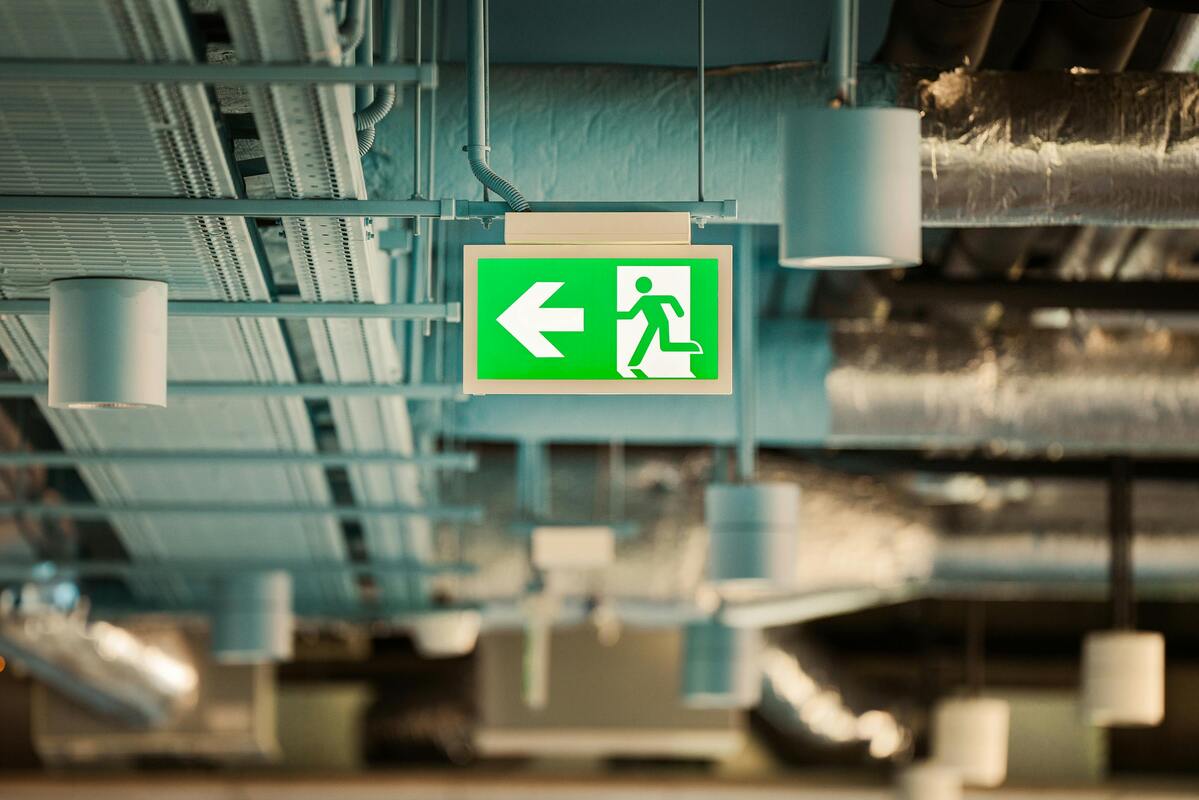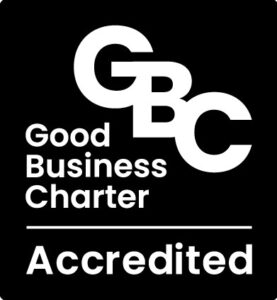
Health and safety signs in the workplace help maintain a secure environment for employees and visitors.
They are visual reminders of potential hazards, required actions and emergency procedures.
Some safety signs have specific requirements by law – for example, did you know that on prohibition or fire safety warnings, at least 35% of each sign must be red? Here is the official Health and Safety Executive (HSE) guidance.
Safety signs are essential for several reasons. They provide concise instructions and warnings, ensuring that all personnel are aware of potential risks and how to avoid them.
Employers must display certain safety signs, such as fire safety and emergency exit signs, in accordance with the Health and Safety (Safety Signs and Signals) Regulations 1996.
Warning signs alert individuals to potential dangers, helping to prevent accidents and injuries in the workplace. Mandatory signs reinforce specific actions or behaviors required for safety compliance, such as wearing personal protective equipment (PPE).
Green signs provide crucial information about safe conditions, emergency exits and first aid locations, which can be life-saving in critical situations.
A proactive approach to safety can not only reduce the likelihood of accidents, but improve employee well-being and increase overall workplace efficiency too.
Think FM has several health and safety-related accreditations, so it’s a topic close to our hearts. For example, we are Safe Contractor approved and ISO 45001 certified for occupational health safety management.

Safety signs and UK law
Employers must display safety signs in the workplace. They are also responsible for installing safety signs.
They must ensure that the signs are visible and understandable to all employees and visitors, while complying with relevant safety regulations and standards.
Additionally, employers should regularly review and update safety signs to ensure they remain relevant and comply with the most recent regulations.
As mentioned, the Health and Safety (Safety Signs and Signals) Regulations 1996 govern the use of safety signs in the workplace:
- They require employers to provide safety signs where there is a significant risk that cannot be avoided or controlled in any other way.
- The regulations specify the design, colour and shape requirements for different types of safety signs.
The Control of Substances Hazardous to Health (COSHH) Regulations 2002 require employers to assess and control risks from hazardous substances. This includes providing appropriate safety signs for substances that pose health risks.
The Personal Protective Equipment at Work Regulations 2022 require employers to provide and maintain appropriate PPE when necessary. Safety signs play a crucial role in reminding workers to use PPE in specific areas – these signs should appear at entry points to hazardous areas.
For further reading, here is our guide on how to do a health and safety inspection at work.
Which types of safety signs are compulsory in UK workplaces?
The six main types of safety signs commonly found in workplaces are:
- Danger and prohibition signs: Examples include “No Smoking” or “Do Not Enter” signs. These signs indicate actions or behaviors that are not permitted or warn of immediate dangers.
- Warning safety signs: These alert individuals to potential hazards or dangers, such as electrical hazards or trip hazards.
- Mandatory signs: These inform people of actions that must be taken, such as wearing personal protective equipment (PPE).
- Emergency exit signs: These indicate the location of safe escape routes in case of emergencies.
- First aid signs: These signs indicate first aid zones or the location of first aid equipment, such as defibrillators.
- Fire safety signs: These provide information about fire-related equipment or procedures, such as the location of fire extinguishers or fire alarm call points.
Health and safety is a core part of hard facilities management. Learn about the differences between hard and soft facilities management.
You may find these signs more recognisable by their colours:

Safety sign colours and sizes
They are:
- Red safety signs signify prohibition or a fire safety hazard. They indicate actions that are not allowed or warn of immediate dangers, such as “No Smoking” signs or fire equipment locations.
- Yellow safety signs represent warnings or cautions. They alert individuals to potential hazards or dangers, like electrical or trip hazards.
- Blue safety signs denote mandatory actions or instructions. These signs inform people of essential actions to take, such as wearing personal protective equipment.
- Green safety signs indicate safe conditions or first aid information. They provide guidance on emergency exits, safe areas and the location of first aid equipment.
This standardisation and consistency of colours helps everyone to quickly interpret safety information.
Even people without this prior knowledge of the reasons behind the differences in colour may instinctively realise their theme (e.g. green = first aid information) to some extent.
The size of safety signs should be appropriate for the location, taking into account the distance from which they will be viewed.
Cleaning and safety signs
Regular cleaning ensures your workspace is clean and also hygienic, supporting safety. If an area needs cleaning during the day, this can be made clear through safety signs too.
A simple ‘cleaning in progress’ sign conveys the information in a straightforward way.
If there’s a spill to clear up, a ‘caution: slippery floor’ sign avoids the risk of anyone missing the hazard and losing their balance. This sign is also useful for when cleaners have just mopped a hard floor which needs time to dry.
It’s possible to use visual cues showing where cleaners have worked or what products they used. For more details, read our guide on visual management examples in the workplace.

Final thoughts: Safety signs in the workplace
We hope you found this article on workplace safety signs helpful. For other informative guides, take a look at our full blog – recent articles include our in-depth guide to sustainability in the workplace, for example.
Think FM specialises in safe commercial cleaning services and is arguably the no.1 commercial cleaning company London businesses trust. Check out our 5 star reviews!
We have received several ISO certifications. Find out the full details about our accreditations.
We provide outstanding office cleaning London companies have relied on for years. For more details about our range of services, please don’t hesitate to get in touch.
share this article











